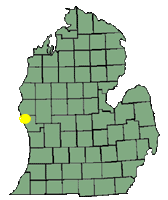|
Bed & Breakfasts
Page 1: Cabins, Camps, & Trailer Parks
Page 2: Motels Hotels
|
|
Lewis House
|
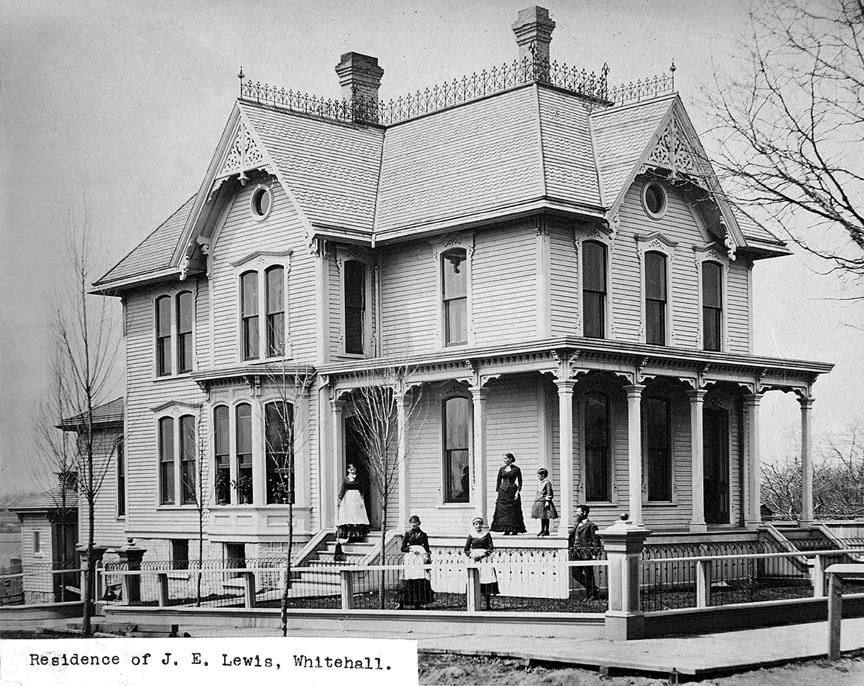
|
The Lewis House
Bed and Breakfast is a relatively new business compared to the history
of the house. |
|
Construction of the
Lewis house began in April 1878. By the end of November of that year,
the house was completed and ready for occupancy. Mr. John C. Lewis was a
lumber baron who married Augusta Covell, daughter of Calvin T. Covell.
(She was also the sister of A.J., L.T., C.E., M.B. & D.W. Covell and
Rebecca Covell-Staples.) John and Augusta married in 1865 and they had
three daughters: Lizzie, Nettie and Florence.
Florence Covell Hodges
maintained the house until 1944 when she sold it to William and Rose
Hildebrandt, who renovated it and operated it as a boarding house which
they called Lakeview Rooms. Rose died tragically when a boiler exploded
in the basement. William died not long after that. Their son Carl and
his wife Lois ran the boarding house until 1976 when they sold it to
Blue Lake Fine Arts Camp.
|
|

1944-1976
|
|
|
The Blue Lake Fine
Arts Camp used the house for campus faculty and out-of-town actors for
the Howmet Playhouse.
The Lewis House
received some minor damage as a result of an electrical malfunction in
1983. The damage was repaired and the house continued to be used by
BLFAC.
In 2006, the BLFAC
donated the Playhouse to the city of Whitehall. In 2007, the Lewis House
was for sale and its preservation was uncertain.
In 2009, Greg and Debi
Hillebrand purchased the house and began the lengthy challenge of
renovation.
In 2015 they opened the
nine-bedroom Lewis House Bed and Breakfast.
|
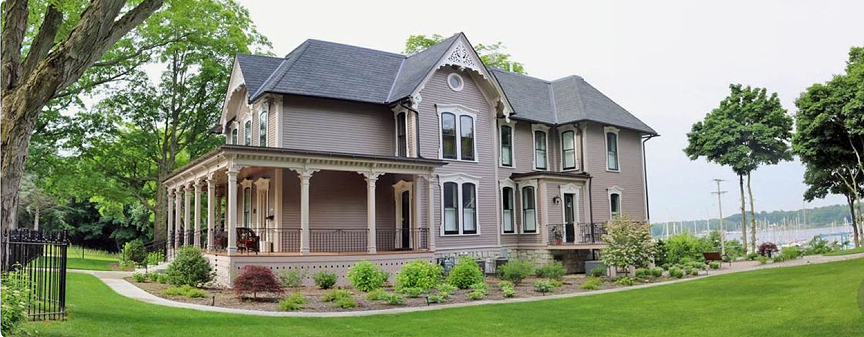
White Swan |
|
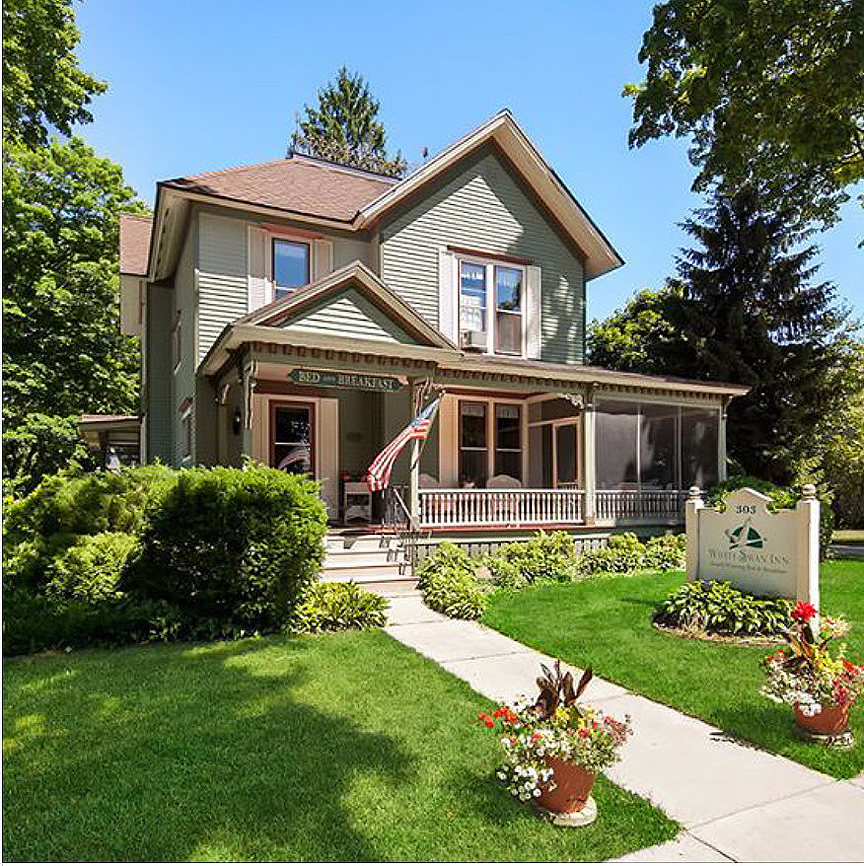
|
Charles E. Covell
built the Queen Anne style house located at 303 South Mears Avenue
sometime around 1884. He and his wife Jessie raised their five
children in the house. Charles died in 1924. His wife Jessie remained
in the house until her death in 1938.
Kathleen Walter moved
into the house and converted the front parlor into a beauty shop which
she operated for many years.
The William Clark
family purchased the house in the early 1970s and gave the house its
distinctive green color.
In the late 1980s,
Michael and Marjorie Bronsink opened the Timekeepers Inn Bed and
Breakfast, converting the front parlor to a clock repair shop.
1995 saw another
change in ownership when Ron & Cathy Russell purchased the house. They
changed the name to the White Swan Inn in honor of the many swans that
inhabited the area waters. The front parlor was changed once again and
is now a gift show for the B&B guests. |
|
Cocoa Cottage
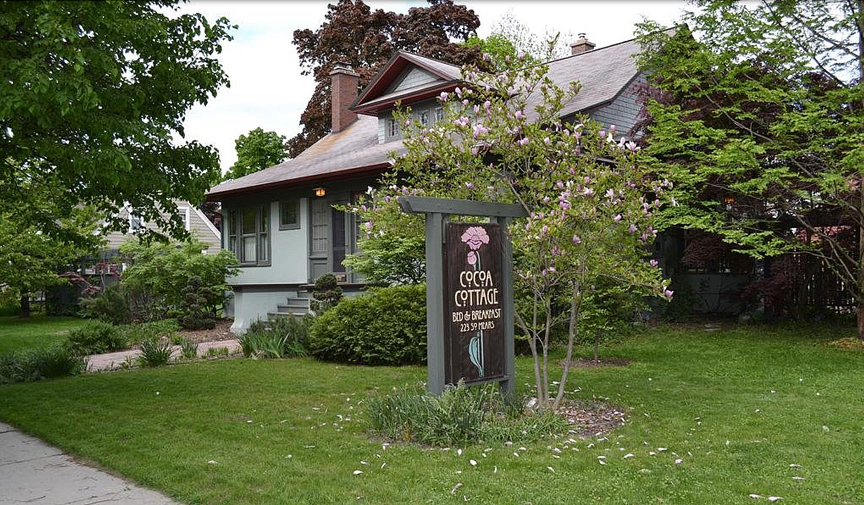
|
The Arts and
Crafts style bungalow was built around 1912 by Hardy A. and Madge (ne:
Perkins) Esterdahl. They lived in the house from the time of its
construction until 1956 with their two children: daughter Elaine and
son Maxon.
In 1956 the
Esterdahls sold the house to John and Beatrice (ne: Marcellous)
Fielstra. They had 6 children: Jack, Lois, Marcella, Joanne, Beatrice
Elaine and Mary Lou. John Fielstra died in 1973.
The Fielstras sold
the house in November 1977 to Ann C. Rudholm. She operated a gift shop
in the front of the house which was called “The Holmstead Gallery.”
Ann sold the house
in October 1986 to Michael E. and Ruth Benovic. They lived in the
house with their three children: Jason, Lori and Lisa until August
1991.
Larry Robertson
and Lisa Tallarico-Robertson purchased the house in August 1991 and
began the restoration process. When it was completed, they opened the
“Cocoa Cottage” Bed and Breakfast.
The White Lake
Area Historical Society presented the Robertsons with the 2004 Award
for Preserving & Improving the Historical Resources of the White Lake
area.
|
|
|
Music Box Bed & Breakfast |
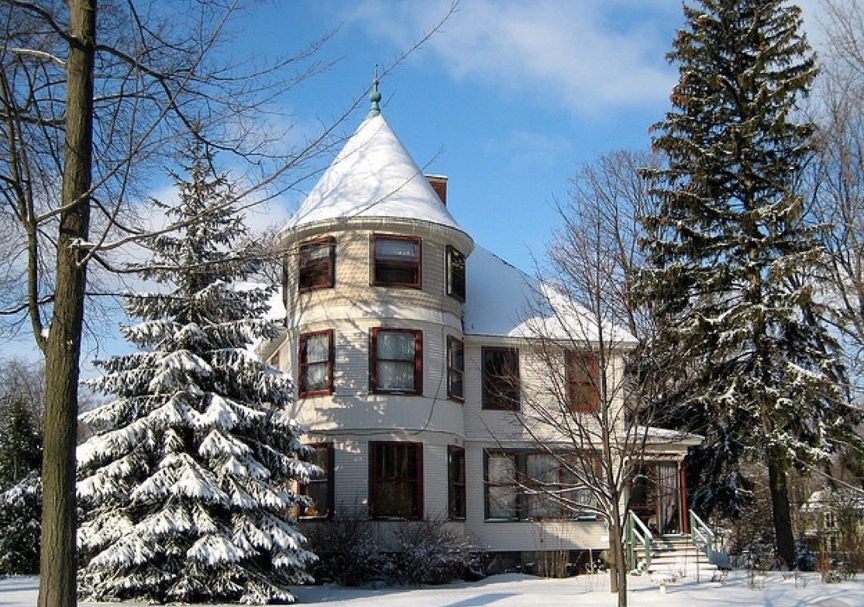
|
Mr. Leroy G.
Seager was born in New York in 1846. When he was eighteen years old,
he and his parents moved to Iowa. It is there that he married Estelle
Sparks in 1872; they had four children - an infant who died at five
months, a daughter Maysie and two sons: George L. and Charles P.
His business
interests in Iowa where in canned goods and banking. Eventually Leroy
left Iowa and came to this area where, in 1894, he started a canning
factory in Hart. He sold his interest in the canning factory in 1900
and bought an interest in Nufer Ceder Company’s box factory. A
short time later he decided to retire to a more private life in
Whitehall.
In April 1904, an
article appeared in the Whitehall Forum telling about L. G. Seager’s
new house that was going to be built at a cost of $7,000. At the
time, it was considered the most modern residence of the time,
featuring wiring for electric lights; hot and cold running water in
the bedrooms and kitchen; and hot air heat in addition to three
fireplaces. The three-story 2,740 plus square foot house contained
four spacious and airy bedrooms and a bath on the second floor; a
bedroom and a den which is circular in shape was located on the third
floor. It also had a large stone basement and furnace room.
|
|
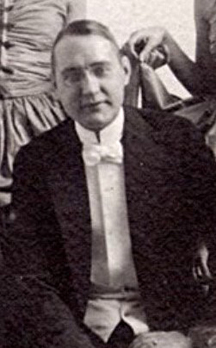
Charles
Seager |
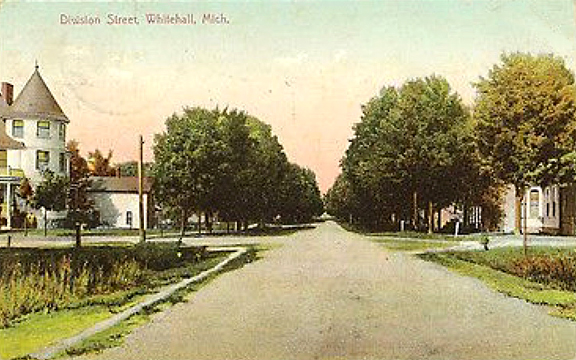
ca1909
– Seager House can be seen on the left in this picture |
|
Unfortunately,
L. G. Seager only had about three years to enjoy his house, as he
died in April 1907. His wife Estelle continued to live in the house
until her death in February 1924. Her son Charles then lived in the
house until he died in February 1960. Charles Parry Seager was a
talented musician and composer involved in the White Lake Dramatic
Club, the Playhouse, and the White Lake Swedish Mid-Summer Festival.
As Charles never
married, he left the house to friend and former Whitehall mayor
Richard Cogswell, who later sold it to a family named Kelly. They
used it as their summer home.
In 1987, John &
Carol LaCroix purchased the house and did some extensive updating to
it while still keeping all the original old charm. During their
ownership, they operated the house as “The Music Box” Bed
and Breakfast until around 1996.
There have been several
other owners since then who have called this house their home
|
|
|
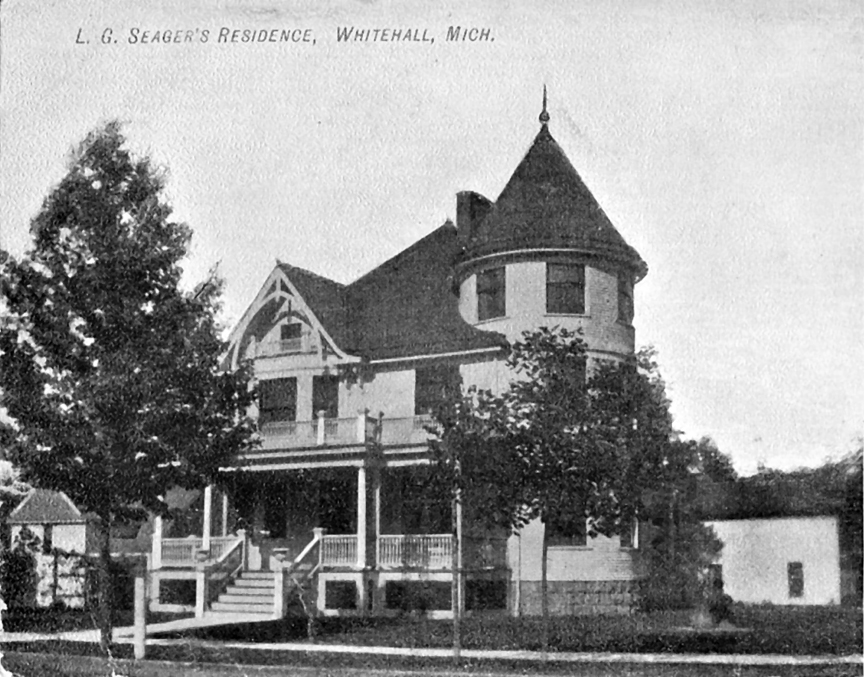
Early picture of the Seager House |
